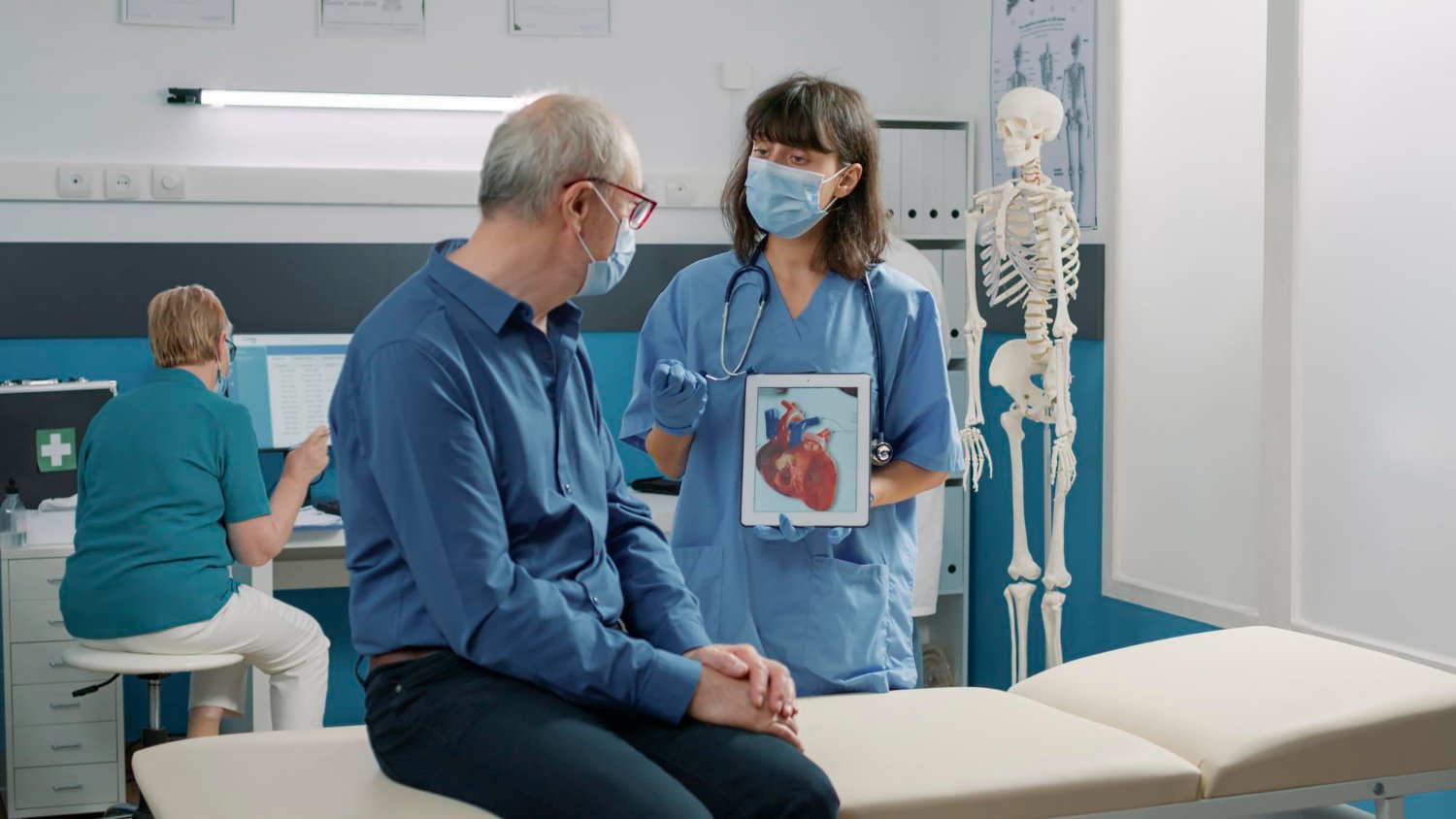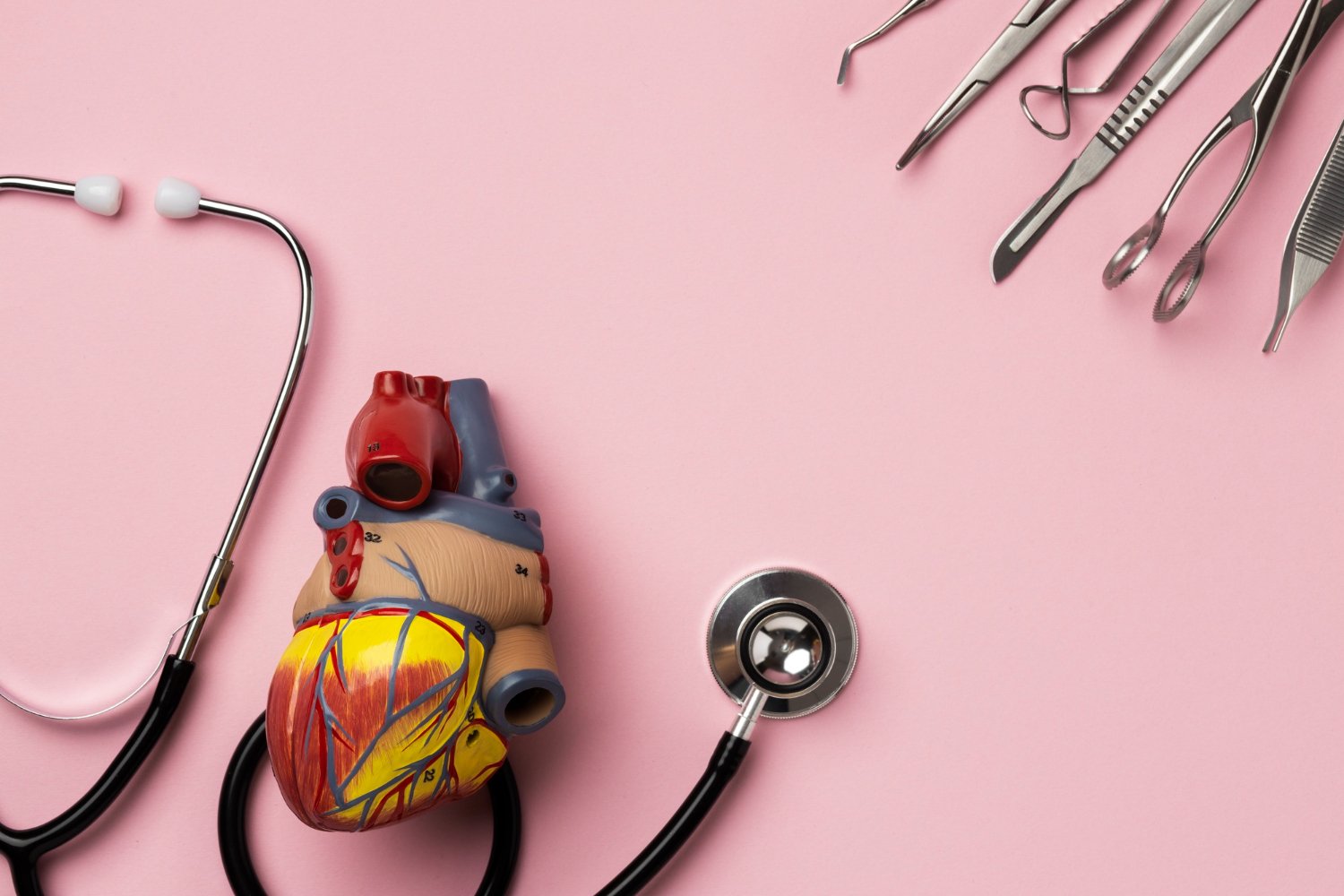Common Complications After Cardiac Procedures (and How to Avoid Them)

If you or a loved one is preparing for a heart procedure—angioplasty (PCI), bypass surgery (CABG), valve repair/replacement, pacemaker/ICD implantation, or TAVR—it’s natural to worry about what could go wrong afterwards. The reassuring news: most patients recover smoothly when risks are known in advance and preventive steps are followed carefully.
This comprehensive guide explains the most common post-procedure complications and clear, patient-friendly ways to avoid them. It also highlights when to seek urgent care and how a highly experienced specialist can reduce risks at every step. For patients in and around Delhi-NCR, Dr. Gautam Naik—widely regarded as one of the best Cardiologists at Apollo Hospital, Delhi—is known for evidence-based decision-making, meticulous technique, and thoughtful follow-up care.
Important: The information below is educational and does not replace personalised medical advice. Always follow your cardiologist’s instructions.
Why Complications Happen
Complications can arise due to:
- Patient factors: age, diabetes, kidney disease, prior stroke, anaemia, smoking, obesity, weak heart function, or bleeding tendency.
- Procedure factors: complexity of blockages, duration of procedure, anaesthesia type, and use of contrast dye.
- Post-procedure factors: medication non-adherence, infections, dehydration, overexertion, or delayed reporting of symptoms.
A good care team reduces risk by optimising you before, using best-practice technique during, and ensuring close monitoring after the procedure.
After Angioplasty (PCI with stent)
Common complications
- Re-narrowing or stent thrombosis: sudden vessel blockage—usually from stopping antiplatelet drugs prematurely.
- Bleeding or haematoma at the wrist/groin access site.
- Allergy or kidney strain from contrast dye.
- Arrhythmias (irregular heartbeats), chest discomfort, or small heart-attack extension (rare).
How to avoid them
- Do not miss antiplatelet medicines (often dual therapy like aspirin + another agent) for the duration advised. Stopping on your own is dangerous.
- Watch the puncture site: increasing swelling, pain, numbness, or colour change warrants a call.
- Hydrate (unless you have fluid restrictions) to flush out contrast; monitor urine output.
- Know your activity plan: light walking is encouraged; avoid heavy lifting for 5–7 days (or as advised).
- Report chest pain, fainting, or breathlessness immediately.
After Bypass Surgery (CABG)
Common complications
- Wound infection (chest or leg), bleeding, atrial fibrillation, lung infection/atelectasis, leg swelling at graft site, and poor sugar control.
- Sternal non-union (rare) with severe coughing/strain.
How to avoid them
- Chest support when coughing using a pillow; follow breathing exercises and incentive spirometry.
- Strict sugar control if diabetic—poor glycaemic control is the biggest infection risk.
- Daily wound checks: redness, discharge, odour, fever, or opening edges need review.
- Gradual rehabilitation: start cardiac rehab early; increase activity per plan, not by guesswork.
- Compression stockings if advised; elevate legs to reduce swelling.
- Quit smoking completely.
After Valve Surgery or TAVR
Common complications
- Conduction issues/heart block sometimes requiring a temporary or permanent pacemaker.
- Stroke risk around the procedure window.
- Bleeding (especially if on anticoagulants), endocarditis (infection on the valve), paravalvular leak after TAVR (usually small and monitored).
How to avoid them
- Adhere to anticoagulant regimen (warfarin/NOAC) exactly; maintain INR in target range if on warfarin. Never double-dose if you forget—call your team.
- Dental hygiene & prophylaxis: good oral care reduces valve infection risk; inform dentists about your valve before any procedure.
- Blood-pressure control and rhythm monitoring per your follow-up plan.
- Attend all echo/ECG checks to catch leaks or rhythm issues early.
After Pacemaker/ICD Implantation
Common complications
- Pocket infection or lead displacement (rare with modern techniques), bleeding, or device site pain.
- Inappropriate shocks in ICDs (uncommon with proper programming).
How to avoid them
- Keep the arm on the implant side within advised range for the first 1–2 weeks; avoid sudden overhead stretches or heavy lifting until cleared.
- Incision care: keep the site clean and dry; no soaking until stitches are out.
- Know device interactions: keep phones a few centimetres away from the device; inform airport security; check MRI compatibility.
- Ensure device checks (in-person or remote) on schedule.
“General-to-All” Risks After Cardiac Procedures
- Bleeding & Anaemia
- Prevention: disclose all blood thinners, herbal supplements, and painkillers; take only prescribed ones. Report black stools, fresh bleeding, sudden weakness, or dizziness.
- Infections (wound, lungs, urine)
- Prevention: hand hygiene, daily wound inspection, early mobilisation, breathing exercises, adequate nutrition, and good sugar control.
- Kidney Injury from Contrast
- Prevention: pre-procedure hydration, minimising contrast volume, avoiding unnecessary painkillers (NSAIDs), and timely labs if you have CKD/diabetes.
- Arrhythmias (especially Atrial Fibrillation post-surgery)
- Prevention: electrolyte balance, gentle activity, taking beta-blockers/antiarrhythmics as prescribed, and monitoring pulse irregularity.
- Blood Clots (DVT/PE)
- Prevention: early walking, calf exercises, compression stockings, and anticoagulation if advised.
- Stroke
- Prevention: optimal BP, sugar, rhythm control, and adherence to antiplatelet/anticoagulant plans; promptly report neurological symptoms.
- Pericarditis (inflammation around the heart)
- Prevention: report persistent chest pain that changes with posture or breathing; follow anti-inflammatory treatment as directed.
The Recovery Playbook: Step-by-Step
Before Your Procedure
- Medication review: bring a full list of medicines and supplements; confirm what to stop/continue (e.g., metformin, blood thinners) and when.
- Optimise sugars/BP for at least 1–2 weeks, if feasible.
- Smoking cessation (even 2–4 weeks helps).
- Kidney-friendly plan if you have CKD: hydration strategy, post-procedure creatinine check.
- Consent & expectations: understand the access site, type of anaesthesia, and likely hospital stay.
In Hospital (During & Immediately After)
- Early mobilisation as allowed; ask for leg and breathing exercises.
- Pain control to enable deep breathing and movement.
- Access-site checks every few hours initially.
- Fluid balance monitoring to protect kidneys and heart.
At Home (First 2–6 Weeks)
- Medication adherence: set alarms; never stop antiplatelets/anticoagulants without cardiology advice.
- Daily self-check: temperature, wound look, swelling, weight (sudden gain can signal fluid retention).
- Activity pacing: short, frequent walks; no heavy lifting until cleared. Follow your cardiac rehab schedule.
- Nutrition: high-protein, low-salt, diabetic-friendly if needed; adequate fluids (if not on restriction).
- Follow-ups: don’t delay stitch removal, ECG/echo, INR checks (if on warfarin), or device interrogation.
Red-Flag Symptoms: Seek Urgent Care If You Notice
- New or worsening chest pain, tightness, or pressure.
- Shortness of breath, severe cough, or low oxygen readings (if you use a pulse ox).
- Fainting, severe dizziness, or palpitations with light-headedness.
- Uncontrolled bleeding, sudden large swelling at puncture or incision site.
- Fever >38°C, wound redness, pus, or foul odour.
- Sudden weakness/numbness on one side, facial droop, slurred speech (possible stroke).
- Very low urine output or dark urine (possible kidney issue).
How the Right Cardiologist Lowers Your Risk
Experienced specialists reduce complications by:
- Choosing the least invasive effective option (radial access for PCI when suitable, physiologic stenting decisions, tailored antiplatelet strategy).
- Meticulous technique and shorter contrast exposure.
- Enhanced recovery protocols (early mobilisation, lung exercises, infection prevention bundles).
- Personalised follow-up: risk-based schedules, patient education, and easy access for queries.
Dr. Gautam Naik—widely recognised as the best Cardiologist at Apollo Hospital, Delhi—is known for a patient-first approach, precise interventional skill, and clear, practical instructions that patients can follow at home. Patients appreciate his emphasis on shared decision-making, safety checklists, and structured rehabilitation plans that speed recovery while minimising risk.
Quick Checklist You Can Print
- I understand my procedure, access site, and expected hospital stay.
- I have a written medication plan, including antiplatelets/anticoagulants and pain medicines.
- I know which signs require urgent help.
- I’ve scheduled follow-ups and any blood tests (e.g., creatinine, INR).
- I have a simple activity plan (walking schedule, no heavy lifting until cleared).
- I know wound care steps and when I can bathe normally.
- I have a cardiac rehab appointment (if advised).
- My sugar, BP, and weight monitoring routine is set.
Frequently Asked Questions
1) How long does recovery take after angioplasty?
Most people resume light activity within a few days and normal routine in 1–2 weeks, depending on fitness and work type. Heavy exertion waits until your cardiologist clears it.
2) Can I ever stop my blood thinners after a stent?
Yes—but only when your cardiologist says it’s safe. Duration depends on stent type, bleeding risk, and your heart event history. Never stop on your own.
3) When is it safe to fly after cardiac procedures?
Short flights may be allowed in 1–2 weeks after uncomplicated PCI; major surgery may require longer. Always get written clearance, especially if you need oxygen or have heart failure.
4) What if I forget a dose of my antiplatelet/anticoagulant?
Do not double the next dose without advice. Call your cardiology team for specific instructions.
5) How can I sleep comfortably after bypass surgery?
Use pillows to support the chest and back; side-sleeping may be possible after a couple of weeks if comfortable, but confirm at your follow-up.
6) Is chest pain normal after stenting?
Mild soreness near the access site is common. True angina-like pain (pressure/heaviness with exertion or at rest) needs immediate medical attention.
7) What diet is best after heart procedures?
A heart-healthy plate: more vegetables, fruits, whole grains, legumes; lean proteins; nuts and seeds; minimal salt, sugar, and fried foods. Tailor to diabetes/CKD if present.
8) Do I really need cardiac rehab?
Yes—cardiac rehab improves fitness, confidence, and risk-factor control, and is linked to better long-term outcomes.
9) Can I use a sauna/steam after surgery or stent?
Avoid high-heat exposure in the early weeks. Get explicit clearance, especially if you have low BP or heart failure.
10) Are dental procedures risky after valve replacement?
They can be if not planned; maintain oral hygiene and inform your dentist. Antibiotic prophylaxis is sometimes recommended—follow your cardiologist’s advice.
The Bottom Line
Most post-cardiac-procedure complications are preventable with the right preparation, careful technique, and disciplined recovery. Choose an experienced cardiologist, follow your medication plan to the letter, keep wounds clean, stay active within limits, and report warning signs early.
For expert-led, personalised heart care in Delhi-NCR, you can consider Dr. Gautam Naik—widely regarded as the best Cardiologist at Apollo Hospital, Delhi—for consultation, second opinions, and comprehensive follow-up planning.







